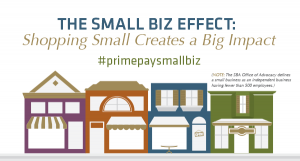Is your website ready for 2016?
Maybe a better question is “Will your website increase your revenue?”
If your answer to that is “no,” then you’ve got your work cut out for you. Because with the new year here, you’ve got to make your website the best it can be. You’ve got to be ready for all those new leads and opportunities coming in.
Don’t worry—we’ve got your back. Our list of 2016 Web Design Trends can start your year off by making your site absolutely unbeatable.
Here’s what you should focus on in 2016 to build the best website you can:
- Switch to HTTP/2 and HTTPS
- Make your site mobile-friendly
- Use LSI keywords to diversify your content
- Build your audience with quality, shareable content
- Get rid of your toxic backlinks, now
There are some big changes on the way, some as early as the end of the month. A new Google Penguin update is coming, and unprepared webmasters should be trembling in fear of getting slapped with a manual penalty. If you aren’t ready, you could be blindsided. And that’s bad for business.
The website trends we’ve mentioned will no doubt evolve as user demands change. So you’ve got to pay attention to make sure you don’t miss anything.
Now let’s break down the trends, shall we?

Trend #4: Better Website Security
Moving toward a safer online experience
Safety matters. Many users take for granted the security of the pages they visit. But it seems like hackers are now more than ever getting access to your personal information.
You probably don’t have to worry about your info getting stolen on sites like Amazon or eBay. Probably. But what about more niche eCommerce sites? Small businesses (like yours, maybe) may not have the resources to make a completely safe site. And it goes both ways, too. Bigger businesses may not realize it’s just as important (if not more so) to protect their visitors’ info as it is to draw customers in. After all, an attractive UI and marketing campaign.
There’s a couple of trending changes you can take advantage of in 2016.
The first of these is to implement HTTPS for your site. This secure communication protocol offers robust security features like better encrypted communication. HTTPS can provide better security for your entire site—content, videos, images, all of it. Google is going to start indexing HTTPS pages over HTTP versions, so you’ll want to make the move ASAP.
Secondly, you can jump on board the HTTP/2 train. HTTP/2 is faster, more secure, and a long-overdue replacement for HTTP, which has been the standard for decades. When a user visits a site with HTTP/2, the site can load with near-instant speed due to a process called “multiplexing.” This process sends bunches of requests at once, instead of the one-by-one approach of HTTP. Google is switching to HTTP/2 soon, and that’s a good indication that HTTP sites will be left in the dust.
Don’t be one of those! Make the move to HTTP/2 (and HTTPS!) and future-proof your site against the changes.

Trend #3: Mobile-Friendliness
Go mobile or go home
Everyone seems to be on mobile these days. And that number isn’t slowing down in 2016. As of July last year, 51% of US users were spending their online time on mobile outlets.
As mobile use increases (and desktop use decreases), this number will continue to rise. Having a mobile-friendly version of your site will be a major step over your competition in earning you online revenue.
Mobile-friendliness will also help your site’s rankings. Google has recently made many moves toward supporting (and even rewarding) sites that take the time to go mobile. Mobile-friendliness is a confirmed ranking factor, and as far as we’re concerned, that makes it a no-brainer. With an even bigger effort coming in the form of Accelerate Mobile Pages (more on that later), it’s a sure bet that if you aren’t on mobile, you should be.
Look at it this way: Users should be able to find your site wherever, whenever—any time, any place. A poor online experience will have them buying from your competition. Why risk that? Fine-tune your mobile site before you miss out on that next big sale.

Trend #2: Unique, Shareable Content
Help your users become healthier, wealthier, and wiser
2016 marks the death of Blackhat SEO. Well, it should, anyway. Keyword stuffing, buying links—all those outdated practices have finally been ousted for what they really are: Cheats. Hacks. Scams. And although content isn’t usually part of what many consider as “web design,” it should be considered equally important.
Google is cracking down on sites that use blackhat techniques and slapping them with penalties and rankings decreases. So it’s pretty clear what you should be doing: following Google’s Webmaster Guidelines to a T.
But how do you rank for your keywords without drawing Google’s ire? How do you come across as not spammy?
The secret: latent semantic indexing (“LSI” for short.) LSI keywords are essentially synonyms that help diversify your content. With LSI, you aren’t spamming the same keywords over and over again. And you’re also avoiding the ever-present problem of duplicate content. Since LSI keywords are used in a similar context as your primary keywords, LSI avoids keyword stuffing while still keeping your content on-theme. Researching what LSI keywords to use is easy; just type your keywords into Google’s search bar and see what automatically fills in. It’s a good place to start, and can help you learn what people are actually searching for when they type in related keywords.
A good resource to follow are the Google Search Quality Guidelines. But we’ll have more to say next week on how you can fine-tune your content to help drive traffic and help your users. So stay tuned!
Here are the final web design trends in 2016 you should implement right now.

Trend #1: Website Health and Speed
Turn your site into a conversion machine
Wondering where you should put the most effort this year? That’s easy—your website’s health and site speed. Keeping both up to date are the two most important 2016 web development trends that will likely gain you the most benefit.
This is for two reasons:
- Clean sites gain better standing with Google. Removing bad links from your site isn’t only for spring cleaning. Maintaining a healthy backlink profile is like a luxury ticket to getting in good with Google. Sites that have other reputable sites linking to them can get a boost in rankings. So it pays to be thorough and clear out the weeds (so to speak).
- Faster websites make more money. Faster websites = more revenue. It’s a simple concept, really—websites that load faster are better at attracting and retaining visitors, which makes them more likely to make a purchase. Many users won’t stick around if your site takes longer than a couple seconds to load. So if your site gets hung up around the 3, 4, or Google forbid, 5 second mark, it’s time to kick things up a notch.
Switching to HTTP/2 will help solve this problem and then some. HTTP/2 can also help your rankings. Sites that deliver better user experiences (re: faster sites with useful info) have the potential to rank highly. But you could also benefit from some on-page optimization, the kind you can only get from a veteran SEO company.
Follow These Other 2016 Website Trends (from Google’s John Mueller)
In a recent Google+ hangout, John Mueller shared a few things he hoped webmasters would focus on in 2016. Quality content, mobile friendliness, and user experience shouldn’t surprise anyone. But Mueller did tell us to look forward to more news about Accelerated Mobile Pages (AMP), as well as Google’s continuing steps to improve JavaScript.
The AMP project is Google’s effort to build a faster mobile experience. It’s open source, meaning you’ll be able to tailor many features (like ads and content) to your own needs while still getting all the structured benefits of fast mobile viewing.
As for JavaScript, Google has had trouble accessing content in JavaScript and indexing it in the past. Mueller states they’re working hard to “figure out how to handle [JavaScript in sites] better in search.” Mueller made no mention of Ajax getting the same treatment, but we don’t doubt Google is working on that as well.
It’s always nice when Google gives us information we can work with. Although nothing was discussed for certain, Google shows they’re paying attention to your efforts. And that is some valuable stuff.
Don’t Miss a Thing This Year!
Do you feel like you’re scrambling to stay on top of the latest online news? Stop and take a deep breath. Because the news you’ve been looking for is right here.
Click to download a PDF of this checklist, so you can make sure your site has everything it needs.
Digital & Social Articles on Business 2 Community(49)







